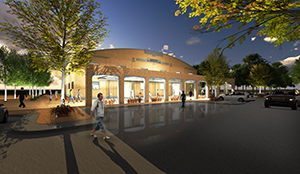After a five-year process, the Department of Engineering and Physics is now formally accredited by the top national engineering accrediting association in the country.
According to the website of the Accreditation Board for Engineering and Technology, ABET is “a non-governmental organization that accredits post-secondary education programs in applied science, computing, engineering, and engineering technology.” The department earned its accreditation by the Engineering Accreditation Commission of ABET.
“You can’t get engineering scholarships without ABET,” said Dr. Jess Dowdy, department chair. “Many employers will not hire someone who is not from an ABET accredited program.”
Dowdy said ACU could not apply for ABET without first having a graduating class. Considering the first class of engineering students came in 2012, they had to wait until the end of the spring 2016 semester to check the box off for ABET accreditation requirements.
There are five main steps in the accreditation process: A readiness review, request of evaluation, a self-study report, an on-site visit and due process.
Dr. Timothy Kennedy, assistant professor of engineering and physics, and Dr. Jeff Arrington, former director of engineering and associate dean of the College of Arts and Sciences, co-edited about 400 pages of assessment for the self-study report step of the ABET accreditation process.
“It was a team effort – our faculty co-wrote it together; each wrote different parts of it, and then peer reviewed different sections of it,” said Kennedy, who is also the executive co-director of engineering. “Then in the end Dr. Arrington and I did our best to make it all sound like one voice.”
“It’s been one of my proudest moments seeing the team come together,” Dowdy said.
ABET is retroactive, so every student who graduated with a Bachelors of Science in Engineerring will have an ABET-accredited degree.
Dowdy said one unique aspect of the engineering program that stands out for ABET is the year-long clinic projects done by the seniors in the engineering department. The students are externally evaluated and funded by companies throughout the United States.
Kennedy said the students spend the first semester designing a solution to a real-world problem and use the second semester physically building and testing the prototype. This is a more realistic time frame and scale for real-world engineering projects, he said.

